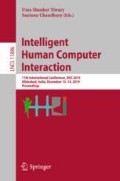Abstract
In the real world, entities are often connected via multiple relations, forming multi-relational network. These complex networks need novel models for their representation and sophisticated tools for their analysis. Community detection is one of the primary tools for the structural and functional analysis of the networks at the macroscopic level. Already a lot of research work has been done on discovering communities in the networks with only single relation. However, the research work on discovering communities in multi-relational network (MRN) is still in its early stages. In this article, we have proposed a novel approach to extract the communities in a multi-relational network using DeepWalk network embedding technique and Consensus clustering. Empirical study is conducted on the real-world publicly available Twitter datasets. In our observations we found that our proposed model performs significantly better than some of the baseline approaches based on spectral clustering algorithm, modularity maximization, block clustering and non-negative matrix factorization.
Access this chapter
Tax calculation will be finalised at checkout
Purchases are for personal use only
References
Cai, D., Shao, Z., He, X., Yan, X., Han, J.: Community mining from multi-relational networks. In: Jorge, A.M., Torgo, L., Brazdil, P., Camacho, R., Gama, J. (eds.) PKDD 2005. LNCS (LNAI), vol. 3721, pp. 445–452. Springer, Heidelberg (2005). https://doi.org/10.1007/11564126_44
Kim, J., Lee, J.G.: Community detection in multi-layer graphs: a survey. ACM SIGMOD Rec. 44(3), 37–48 (2015)
Perozzi, B., Al-Rfou, R., Skiena, S.: Deepwalk: online learning of social representations. In: Proceedings of the 20th ACM SIGKDD International Conference on Knowledge Discovery and Data Mining, pp. 701–710. ACM (2014)
Vega-Pons, S., Ruiz-Shulcloper, J.: A survey of clustering ensemble algorithms. Int. J. Pattern Recogn. Artif. Intell. 25(03), 337–372 (2011)
Hastings, M.B.: Community detection as an inference problem. Phys. Rev. E 74(3), 035102 (2006)
Newman, M.E.: Modularity and community structure in networks. Proc. Nat. Acad. Sci. U.S.A. 103(23), 8577–8582 (2006)
Newman, M.E.: Spectral methods for community detection and graph partitioning. Phys. Rev. E 88(4), 042822 (2013)
Liu, X., Liu, W., Murata, T., Wakita, K.: A framework for community detection in heterogeneous multi-relational networks. Adv. Complex Syst. 17(06), 1450018 (2014)
Lin, Y.R., Sun, J., Castro, P., Konuru, R., Sundaram, H., Kelliher, A.: Metafac: community discovery via relational hypergraph factorization. In: Proceedings of the 15th ACM SIGKDD international conference on Knowledge discovery and data mining, pp. 527–536. ACM (2009)
Verma, A., Bharadwaj, K.K.: Identifying community structure in a multi-relational network employing non-negative tensor factorization and GA k-means clustering. Wiley Interdisc. Rev. Data Min. Knowl. Discovery 7(1), e1196 (2017)
Verma, A., Bharadwaj, K.K.: Discovering communities in heterogeneous social networks based on non-negative tensor factorization and cluster ensemble approach. In: Prasath, R., Vuppala, A.K., Kathirvalavakumar, T. (eds.) MIKE 2015. LNCS (LNAI), vol. 9468, pp. 150–160. Springer, Cham (2015). https://doi.org/10.1007/978-3-319-26832-3_15
Guesmi, S., Trabelsi, C., Latiri, C.: CoMRing: a framework for community detection based on multi-relational querying exploration. Procedia Comput. Sci. 96, 627–636 (2016)
Ali, H.T., Liu, S., Yilmaz, Y., Couillet, R., Rajapakse, I., Hero, A.: Latent heterogeneous multilayer community detection. In: ICASSP 2019–2019 IEEE International Conference on Acoustics, Speech and Signal Processing (ICASSP), pp. 8142-8146. IEEE, April 2019
Burgess, M., Adar, E., Cafarella, M.: Link-prediction enhanced consensus clustering for complex networks. PLoS ONE 11(5), e0153384 (2016)
Lancichinetti, A., Fortunato, S.: Consensus clustering in complex networks. Sci. rep. 2, 336 (2012)
Holland, P.W., Laskey, K.B., Leinhardt, S.: Stochastic blockmodels: first steps. Soc. Netw. 5(2), 109–137 (1983)
Valles-Catala, T., Massucci, F.A., Guimera, R., Sales-Pardo, M.: Multilayer stochastic block models reveal the multilayer structure of complex networks. Phys. Rev. X 6(1), 011036 (2016)
Reyes, P., Rodriguez, A.: Stochastic blockmodels for exchangeable collections of networks. arXiv preprint arXiv:1606.05277 (2016)
Barbillon, P., Donnet, S., Lazega, E., Bar-Hen, A.: Stochastic block models for multiplex networks: an application to a multilevel network of researchers. J. Roy. Stat. Soc. Ser. A (Stat. Soc.) 180(1), 295–314 (2017)
Pramanik, S., Tackx, R., Navelkar, A., Guillaume, J.L., Mitra, B.: Discovering community structure in multilayer networks. In: 2017 IEEE International Conference on Data Science and Advanced Analytics (DSAA), pp. 611–620. IEEE, October 2017
Boden, B., Günnemann, S., Hoffmann, H., Seidl, T.: Mining coherent subgraphs in multi-layer graphs with edge labels. In: Proceedings of the 18th ACM SIGKDD International Conference on Knowledge Discovery and Data Mining, pp. 1258–1266. ACM (2012)
Zeng, Z., Wang, J., Zhou, L., Karypis, G.: Coherent closed quasi-clique discovery from large dense graph databases. In: Proceedings of the 12th ACM SIGKDD International Conference on Knowledge Discovery and Data Mining, pp. 797–802. ACM (2006)
Arthur, D., Vassilvitskii, S.: k-means ++: the advantages of careful seeding. In: Proceedings of the Eighteenth Annual ACM-SIAM Symposium on Discrete Algorithms, pp. 1027–1035. Society for Industrial and Applied Mathematics (2007)
Kuncheva, L.I., Hadjitodorov, S.T., Todorova, L.P.: Experimental comparison of cluster ensemble methods. In: 2006 9th International Conference on Information Fusion, pp. 1–7. IEEE (2006)
Rokach, L., Maimon, O.: Clustering methods. In: Maimon, O., Rokach, L. (eds.) Data Mining and Knowledge Discovery Handbook, pp. 321–352. Springer, Boston (2005). https://doi.org/10.1007/b107408
Greene, D., Cunningham, P.: Producing a unified graph representation from multiple social network views. In: Proceedings of the 5th Annual ACM Web Science Conference, pp. 118–121. ACM (2013)
Von Luxburg, U.: A tutorial on spectral clustering. Stat. Comput. 17(4), 395–416 (2007)
Strehl, A., Ghosh, J.: Cluster ensembles—a knowledge reuse framework for combining multiple partitions. J. Mach. Learn. Res. 3, 583–617 (2003)
Lee, D.D., Seung, H.S.: Algorithms for non-negative matrix factorization. Adv. Neural. Inf. Process. Syst. 13, 556–562 (2001)
Author information
Authors and Affiliations
Corresponding author
Editor information
Editors and Affiliations
Rights and permissions
Copyright information
© 2020 Springer Nature Switzerland AG
About this paper
Cite this paper
Singh, D., Verma, A. (2020). Extracting Community Structure in Multi-relational Network via DeepWalk and Consensus Clustering. In: Tiwary, U., Chaudhury, S. (eds) Intelligent Human Computer Interaction. IHCI 2019. Lecture Notes in Computer Science(), vol 11886. Springer, Cham. https://doi.org/10.1007/978-3-030-44689-5_21
Download citation
DOI: https://doi.org/10.1007/978-3-030-44689-5_21
Published:
Publisher Name: Springer, Cham
Print ISBN: 978-3-030-44688-8
Online ISBN: 978-3-030-44689-5
eBook Packages: Computer ScienceComputer Science (R0)

